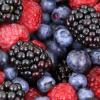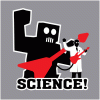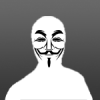
David Sinclair strikes again
#61
Posted 21 December 2013 - 03:26 PM
The Source Naturals sublingual NAD lozenges are a keeper and at the least promote noticeable increased mental stimulation.
The NIAGEN (NR) will be interesting to try.
#62
Posted 21 December 2013 - 05:39 PM
#63
Posted 21 December 2013 - 06:08 PM
I think Darryl hit gold in post 58 with the CD38 inhibition approach. I believe for long term effects, it will be necessary to both increase the availability of NAD+ through the rate limiting substrates and decrease the recycling of NAD+ through the inhibition of CD38 and/or PARP-1 which may otherwise become up-regulated in response to a higher NAD/NADH ratio as the human physiology tries to maintain homeostasis.
The Source Naturals sublingual NAD lozenges are a keeper and at the least promote noticeable increased mental stimulation.
The NIAGEN (NR) will be interesting to try.
I've been taking Niagen for about 6 months but I've never "felt" anything from it, but I take it with a low dose niacin tablet too so the skin flush may be covering any immediate feeling presented at the same time. My skin tone has gotten noticeably better, but I was attributing that to the almost daily reactive vasodilation, and not necessarily any enhanced mitochondrial function. Unfortunately the price of a bottle of Niagen has increased almost 100% at Swansons & elsewhere since I last bought it, even before Sinclairs recent announcement.
#64
Posted 21 December 2013 - 09:14 PM
http://www.theguardi...ng-human-trials
#65
Posted 21 December 2013 - 10:31 PM
Turner said a "magic pill" that reverses ageing is several years away, partially due to the cost of the compound, which would be about $50,000 a day for a human.
Hmm. That sounds like the "Street Value" that the cops used to quote when they nabbed a couple kilos of dope. That's probably based on the mouse dose without metabolic scaling, and using the Sigma Aldrich price for 100 mg of super purity material. BTW, Sigma invites bulk quotations for that compound, but check out this listing for nicotinamide riboside on Alibaba. It looks like four tall barrels sitting on a pallet. At Sigma's price, that should be enough to pay off the National Debt...
#66
Posted 21 December 2013 - 11:40 PM
Edited by Darryl, 21 December 2013 - 11:41 PM.
#67
Posted 22 December 2013 - 01:11 AM
For those interested in the CD38 inhibition approach to increasing cellular NAD+, the most cost-effective source for the inhibitor cyanidin-3-O-b-glucoside isn't purple corn, it's black rice, which has 2 mg / g dry weight. Comes out to $5 / g of the anthocyanin at retail.
Maybe all the reported benefits of blueberries, blackberries, purple corn, purple yams, black-purple rice, pomegranates, other miscellaneous berries, etc., is actually due to the Cy3G levels in each and the subsequent upstream effect of NAD+ increase.
#68
Posted 22 December 2013 - 09:45 AM
If keeping NAD level is so crucial then evolution should get care about it long time ago. It may be dont work at all, or dont work for long periods, or have some drawbacks and decrease survival rate.
We need at least some lifetime mice study with different protocols compared.
#69
Posted 22 December 2013 - 11:52 AM
For those interested in the CD38 inhibition approach to increasing cellular NAD+, the most cost-effective source for the inhibitor cyanidin-3-O-β-glucoside isn't purple corn, it's black rice, which has 2 mg / g dry weight. Comes out to $5 / g of the anthocyanin at retail.
That's possibly the most concentrated, but certainly not the most cost efficient source. Black elderberries contain ~0,8mg/g fresh weight. They are more than 90% water, so dried berries might contain as much as 8mg/g. We have elder trees growing all over here, I just have to to go to the edge of the forest in october and within minutes I can gather a whole basket full of black elderberries (€0.00/g anthocyanin
Another option, which is probably more readily available in the US, as they are indigenous to Nothern America, are black chokeberries. They don't caintain as much cyanidin 3-O-glucoside as elderberries but high amounts of other cyanidin saccharides (3-O-galactoside, 3-O-arabinoside and 3-O-xyloside), which may have a similar inhibitory capacity, totaling to ~0.9mg/g fw. Moreover, they contain extremely high levels of oligomeric proanthocyanidins (~6mg/g) and have shown potent effects in RCTs, animal and in vitro studies. They can be eaten raw or dried and are delicious (1kg dried chokeberries is about €15 here, that would be ~€1.5/gr anthocyanins). Black chokebery juice tastes pretty much like concentrated, dealkoholized red wine, verry tannic and so intensely colored, that you can dilute it 1:5 and it still looks like red wine!
Edited by timar, 22 December 2013 - 12:13 PM.
#70
Posted 22 December 2013 - 05:59 PM
I am sceptical about this 'magic pill' hype. All we have is one very short term study with some not so comprehensive biomarkers.
If keeping NAD level is so crucial then evolution should get care about it long time ago. It may be dont work at all, or dont work for long periods, or have some drawbacks and decrease survival rate.
We need at least some lifetime mice study with different protocols compared.
Well, it seems that excess calories and in particular excess carbs metabolized through the Krebs cycle suck out our NAD+. Krebs cycle consumes NAD+ like nothing else. And from evolutionary perspective, we should not be able to eat much refined carbs at all.
#71
Posted 22 December 2013 - 06:35 PM
Well, it seems that excess calories and in particular excess carbs metabolized through the Krebs cycle suck out our NAD+. Krebs cycle consumes NAD+ like nothing else. And from evolutionary perspective, we should not be able to eat much refined carbs at all.
That's an interesting theory but it is physical exercise which drives the Krebs cycle and consumes NAD+. If it was as simple as using up NAD+ too quickly, then exercise (the largest driver of the Krebs cycle) wouldn't be correlated with health and longevity. Exercise driving the Krebs cycle keeps our muscles young just like NMN kept the old mice's muscles young.
#72
Posted 22 December 2013 - 07:59 PM
#73
Posted 23 December 2013 - 01:37 AM
BTW DO you guys think that since the dosage was for 1 week , super high and it reversed the aging, in case of humans - a less dosage , not 30g/day but rather 250mg/day along with inhibitors as discussed above , will slowly and steadily increase the levels of NAD+ over a course of years? Even 250 mg/day of NMN from that expensiveness vendor - 10k dollars per month. do you think the prices will go down?
#74
Posted 23 December 2013 - 02:48 AM
This substance was mentioned in Sinclair's mouse study that started the resveratrol craze, as an SIRT1 agonist.
HPN N Niagen, Capsules, 60 EA
Online stores
Swanson Health Products
$47.99
Tiger Fitness$47.99
Drugstore.com Free shipping$47.99
Edited by maxwatt, 23 December 2013 - 02:49 AM.
#75
Posted 23 December 2013 - 05:39 AM
Edited by LucidMind, 23 December 2013 - 05:39 AM.
#76
Posted 23 December 2013 - 05:44 AM
I can't imagine that the capsule would be that much bigger if they compacted it in a just a single a capsule. Since I take a cocktail of nootropics, nutraceuticals, and supplements daily, the less pills the better IMO.
Edited by LucidMind, 23 December 2013 - 05:45 AM.
#77
Posted 23 December 2013 - 05:54 AM
NRs major advantage over nicotinic acid appears to be the absence of flushing. NA is comparable, and in some tissues (see liver in chart D below) better at increasing [NAD+]. Also, the absence of nicotinamide riboside kinases in brain and white fat tissue may be an issue for achieving whole-body effects with NR.
Cantó, Carles, et al. "The NAD+ precursor nicotinamide riboside enhances oxidative metabolism and protects against high-fat diet induced obesity." Cell metabolism 15.6 (2012): 838-847.
© C2C12 myotubes, Hepa1.6, and HEK293T cells were treated with either PBS (as vehicle) or 0.5 mM of NR, NMN, or NA for 24 hr. Then total NAD+ intracellular content was determined as in (A).
(D) C57Bl/6J mice were fed with chow containing vehicle (water) or either NR, NMN,or NA at 400 mg/kg/day (n = 8 mice per group). After 1 week, NAD+ content was determined in liver and quadriceps muscle.
...
Chronic NR supplementation increased NAD+ levels in both CD and HFD conditions in some tissues, including liver and muscle, but not in others, such as brain or white adipose tissue. These differences could be due to the differential expression of nicotinamide ribose kinases in tissues. NRKs initiate NR metabolism into NAD+.
...
We were unable to detect PGC-1α in total lysates from white adipose tissue or brain, but in muscle, liver, and BAT, PGC-1α was deacetylated upon NR treatment. These observations highlight how NR can only induce sirtuin activity in tissues where NAD+ accumulates.
The non-physiological 500 μM concentrations used in the cell studies (chart C) may not be very informative. At those levels, I'd expect inhibition by nicotinamide and perhaps NR of the NAD+ consuming enzymes (CD38, PARPs, sirtuins, etc) to contribute to NAD+ levels.
Edited by Darryl, 23 December 2013 - 06:28 AM.
#78
Posted 23 December 2013 - 08:17 AM
in http://www.ncbi.nlm....les/PMC3616313/ they say they saw "maximal effects at concentrations between 0.5 and 1 mM" in vitro.
They also gave the mice 400mg/Kg doses. This stuff is selling for $3.20/g so at 400mg/Kg for a 72Kg person, it would cost $92 a day and require a dose of one ounce a day (28.2g).
On the other hand, depending on the pharmacokinetics, perhaps a lower dose would be usable.
Any thoughts or information?
#79
Posted 23 December 2013 - 09:36 AM
Nicotinamide riboside, and it's alternate path to NMN and NAD+ are very promising, but I haven't found evidence that its largely absorbed as NR when taken orally, rather than broken down to nicotinamide. I've searched for any pharmacokinetic studies, and haven't found a single plasma measure.
NRs major advantage over nicotinic acid appears to be the absence of flushing. NA is comparable, and in some tissues (see liver in chart D below) better at increasing [NAD+]. Also, the absence of nicotinamide riboside kinases in brain and white fat tissue may be an issue for achieving whole-body effects with NR. [...]
The non-physiological 500 μM concentrations used in the cell studies (chart C) may not be very informative. At those levels, I'd expect inhibition by nicotinamide and perhaps NR of the NAD+ consuming enzymes (CD38, PARPs, sirtuins, etc) to contribute to NAD+ levels.
In the cell article they say it works orally even with food. It is found in some foods in small amounts. If China jumps in on producing it the price might drop like a rock for it.
http://juvenon.com/j.../Vitamin-NR.pdf
Edited by Michael, 30 July 2017 - 09:56 PM.
trim quotes
#80
Posted 23 December 2013 - 11:49 AM
#81
Posted 23 December 2013 - 12:53 PM
smithx, where can you get NR for $3.20 a gram?
#82
Posted 23 December 2013 - 04:51 PM
Well, it seems that excess calories and in particular excess carbs metabolized through the Krebs cycle suck out our NAD+. Krebs cycle consumes NAD+ like nothing else. And from evolutionary perspective, we should not be able to eat much refined carbs at all.
That's an interesting theory but it is physical exercise which drives the Krebs cycle and consumes NAD+. If it was as simple as using up NAD+ too quickly, then exercise (the largest driver of the Krebs cycle) wouldn't be correlated with health and longevity. Exercise driving the Krebs cycle keeps our muscles young just like NMN kept the old mice's muscles young.
Well, it is more complex than that. In fact, exercise also implicates anaerobic pathways like lactic acid. With enough intensity, the Krebs cycle is essentially entirely bypassed. But one should really look at it from an evolutionary angle: how much did our ancestors exercise and how did they eat some 40.000 years ago? Our gene pool essentially remains the same. The answer would be that our bodies require a lot of daily exercise. The signaling it creates actually enhances the Krebs cycle. There is a great book called Spark basically proving that even the brain is hormonally a muscle. Physical exercise is the single most important determinant for mental performance, as the brain depends on the hormonal cascade arising out of exercise. As to nutrition, we can say with certainty that humans have only very recently had access to refined carbs. There is no evolutionary reason for us to expect that they would be OK for human consumption, particularly given our unnatural sedentary lifestyles. The most logical reason perhaps would be that the refined carbs are just too fast. The Krebs cycle and NAD+ cannot keep up for the long haul. And obesity and sickness follows. Given that, exercise that both boosts Krebs cycle and also uses other cycles would logically help with NAD+. To a limit only though, given the U shaped benefit curve. Marathon runners die young.
For further discussion, see this. The benefits of calorie restriction seem to arise out of what actually is carb restriction: https://www.thieme-c.../s-0032-1312656
There are many other studies the identify carbs as the obvious culprit for accelerated aging.
Edited by Ukko, 23 December 2013 - 04:52 PM.
#83
Posted 23 December 2013 - 05:19 PM
http://www.ncbi.nlm....pubmed/24314867
http://www.wjgnet.co...327/15/5674.asp
http://www.ncbi.nlm....pubmed/23740559
http://www.ncbi.nlm....pubmed/16891222
http://www.ncbi.nlm....pubmed/23278446
http://www.ncbi.nlm....pubmed/22971213
http://www.ncbi.nlm....pubmed/20480523
http://www.ncbi.nlm....pubmed/20179894
Wow. Hundreds and hundreds of studies. Many say niacin(amide) protects against type 1 diabetes and many say excess niacin(amide) causes type 2 dabetes. Ouch. Seems like the culprits are the familiar ones: methylation and the infamous U shaped curve.
Edited by Ukko, 23 December 2013 - 05:21 PM.
#84
Posted 23 December 2013 - 05:53 PM
Well, it seems that excess calories and in particular excess carbs metabolized through the Krebs cycle suck out our NAD+. Krebs cycle consumes NAD+ like nothing else. And from evolutionary perspective, we should not be able to eat much refined carbs at all.
That's an interesting theory but it is physical exercise which drives the Krebs cycle and consumes NAD+. If it was as simple as using up NAD+ too quickly, then exercise (the largest driver of the Krebs cycle) wouldn't be correlated with health and longevity. Exercise driving the Krebs cycle keeps our muscles young just like NMN kept the old mice's muscles young.
Well, it is more complex than that. In fact, exercise also implicates anaerobic pathways like lactic acid. With enough intensity, the Krebs cycle is essentially entirely bypassed. But one should really look at it from an evolutionary angle: how much did our ancestors exercise and how did they eat some 40.000 years ago? Our gene pool essentially remains the same. The answer would be that our bodies require a lot of daily exercise. The signaling it creates actually enhances the Krebs cycle. There is a great book called Spark basically proving that even the brain is hormonally a muscle. Physical exercise is the single most important determinant for mental performance, as the brain depends on the hormonal cascade arising out of exercise. As to nutrition, we can say with certainty that humans have only very recently had access to refined carbs. There is no evolutionary reason for us to expect that they would be OK for human consumption, particularly given our unnatural sedentary lifestyles. The most logical reason perhaps would be that the refined carbs are just too fast. The Krebs cycle and NAD+ cannot keep up for the long haul. And obesity and sickness follows. Given that, exercise that both boosts Krebs cycle and also uses other cycles would logically help with NAD+. To a limit only though, given the U shaped benefit curve. Marathon runners die young.
For further discussion, see this. The benefits of calorie restriction seem to arise out of what actually is carb restriction: https://www.thieme-c.../s-0032-1312656
There are many other studies the identify carbs as the obvious culprit for accelerated aging.
Interesting theories but Sinclair's mice were neither sick, obese, or consuming an abnormal diet and they still benefited (enormously it would seem) so the NAD+ issue would seem to be independent of diet. And many that may benefit from increased NAD+ levels are not living "unnatural sedentary lifestyles", eating unhealthy (SAD diet), or are obese/sick. So you are right in that it is more complex than that.
#85
Posted 23 December 2013 - 06:02 PM
Ordered some NR a few days back. Do also have niacinamide and buffered niacin (inositol hexanicotinate) in my "reserves". But they suck up methylfolate, which can be a problem. More importantly, I need to determine their impact on insulin sensitivity before supplementing them for the long haul. If their impact on carb metabolism and insulin is negative, then they cannot be healthy and life-extending for the long haul. Seems like there are conflicting studies:
http://www.ncbi.nlm....pubmed/24314867
http://www.wjgnet.co...327/15/5674.asp
http://www.ncbi.nlm....pubmed/23740559
http://www.ncbi.nlm....pubmed/16891222
http://www.ncbi.nlm....pubmed/23278446
http://www.ncbi.nlm....pubmed/22971213
http://www.ncbi.nlm....pubmed/20480523
http://www.ncbi.nlm....pubmed/20179894
Wow. Hundreds and hundreds of studies. Many say niacin(amide) protects against type 1 diabetes and many say excess niacin(amide) causes type 2 dabetes. Ouch. Seems like the culprits are the familiar ones: methylation and the infamous U shaped curve.
This is why it was suggested not to megadose niacinamide earlier in the thread.
#86
Posted 23 December 2013 - 07:17 PM
Well, it is more complex than that. In fact, exercise also implicates anaerobic pathways like lactic acid. With enough intensity, the Krebs cycle is essentially entirely bypassed.
You're a little off. The only time the Krebs cycle is bypassed (if you can call it that; it's more rather quiescent until its started up) is during the first couple of minutes of any, moreso during intense, physical activity. After two minutes or so, you're in the Krebs cycle almost exclusively.
Muscular Energy Sources (Simplified)
First Act
Creatine Phosphate. All muscles have a reserve of creatine phosphate for quick, high-energy, resources. This energy lasts for about 8-10 seconds. ADP to ATP.
Second Act
Glycolysis. All muscles also have a store of glycogen, but it takes a series of reactions to convert this to energy. This is usually an anaerobic activity. Lactic acid creation. This energy can last for about 90 seconds. Glucose to pyruvate to ATP.
Third Act
Glycolysis -- > Aerobic respiration / Krebs cycle. After two minutes of continued physical activity this process takes over. Glucose along with oxygen now is converted to the energy needed. The glucose can be sourced from remaining muscle supply, food in the intestine, glycogen in the liver, breakdown of fat reserves, or in extreme instances muscle or body protein. This can last for hours. Glucose to pyruvate thru Krebs cycle to ATP.
Edited by trance, 23 December 2013 - 07:20 PM.
#87
Posted 23 December 2013 - 07:33 PM
Well, it is more complex than that. In fact, exercise also implicates anaerobic pathways like lactic acid. With enough intensity, the Krebs cycle is essentially entirely bypassed.
You're a little off. The only time the Krebs cycle is bypassed (if you can call it that; it's more rather quiescent until its started up) is during the first couple of minutes of any, moreso during intense, physical activity. After two minutes or so, you're in the Krebs cycle almost exclusively.
Muscular Energy Sources (Simplified)
First Act
Creatine Phosphate. All muscles have a reserve of creatine phosphate for quick, high-energy, resources. This energy lasts for about 8-10 seconds. ADP to ATP.
Second Act
Glycolysis. All muscles also have a store of glycogen, but it takes a series of reactions to convert this to energy. This is usually an anaerobic activity. Lactic acid creation. This energy can last for about 90 seconds. Glucose to pyruvate to ATP.
Third Act
Glycolysis -- > Aerobic respiration / Krebs cycle. After two minutes of continued physical activity this process takes over. Glucose along with oxygen now is converted to the energy needed. The glucose can be sourced from remaining muscle supply, food in the intestine, glycogen in the liver, breakdown of fat reserves, or in extreme instances muscle or body protein. This can last for hours. Glucose to pyruvate thru Krebs cycle to ATP.
I know this is a bit off topic but my colleage was telling me to adjust my workouts on our rowing machine to do 2 minutes as hard as possible, then rest for a minute, then repeat for a total of 3 sets. I ignored him and kept doing my 20 minute straight sets but now I wonder if you're saying he was onto something.
#88
Posted 23 December 2013 - 07:53 PM
I know this is a bit off topic but my colleage was telling me to adjust my workouts on our rowing machine to do 2 minutes as hard as possible, then rest for a minute, then repeat for a total of 3 sets. I ignored him and kept doing my 20 minute straight sets but now I wonder if you're saying he was onto something.
HIIT - high intensity interval training. Why sprinters look so buff compared to marathoners. Will attain a higher degree of fitness in a shorter time...due to optimizing the pathways trance detailed and will optimize the anabolic hormone pathways (testosterone etc) while not over stressing the catabolic pathways (cortisone etc).
Edited by Hebbeh, 23 December 2013 - 07:58 PM.
#89
Posted 23 December 2013 - 07:57 PM
#90
Posted 23 December 2013 - 09:38 PM
Trance said: My main complaint [on NADH] was insatiable and miserable constant feeling of hunger. My girl friend of the time experienced the same effect
Your experience seems to confirm the research and anecdotal consensus (of forums) that consistent nictinamide use can induce a pronounced insulin resistant state. This insulin resistant state is also likely indicative of the hypoxic state that NAD inducing strategies are designed to ameliorate. Anything that has the potential to produce a state of long term energy deficiency in the cell should be looked at with suspicion, even if it temporarily increases NAD.
We have to parse the strategies that may temprarily upregulate pathways at the cost of long term downregulation and strategies that will cause semi-permanent or permanent increase in, in the case of this model of aging, the NAD/NADH ratio at baseline. SIRT activating strategies seem to fall in the latter category. Niacinamide seems to fall in the former. However, niacin related compounds seem to be varied in action with some being seemingly opposite in their net effect than other similar compounds. Getting to the bottom of the net long term effects on energy metabolism of all relevant niacin related compounds should be a priority.
Nicotinic acid is clearly superior to nicotinamide at inducing NAD production, as it appears the nicotinamide→NAD pathway is saturated at low doses. The level of extracellular nicotinic acid that maximises NAD production is a fairly moderate 5 µm. 500 mg of immediate release nicotinic acid produces plasma peaks of 40-48 µm, above 5 µm for almost 2 hours:
It would be interesting to know what the NAD/NADH ratio was, after return to homeostasis, in relation to the prior baseline.
Nad+ is thought to drive SIRT activation. Here's an article to add some more context:
http://www.ncbi.nlm....les/PMC3764375/
excerpt:
Sirtuin enzymatic activity requires NAD+ as a cofactor whose levels increase by energy stress which occurs, e.g., during fasting, CR, and exercise. Thus, NAD+ mediates the adaptive response to low energy by activating sirtuins and their downstream targets. Sirtuins transform NAD+ to nicotinamide, which acts as a competitive inhibitor of sirtuins by a negative feedback mechanism. The other breakdown product of NAD+ is O-acetyl-ADP-ribose.
So, we can see here how niacinamide supplementation may act as such a potent SIRT inhibitor and likely a potent downregulating agent for NAD+.
Interestingly, NAD+ levels greatly increase during CR in muscle and white adipose tissue
Nicainamide is the 'anti-calorie restriction' mimetic and likely a strong net inhibitor of NAD+.
Other relevant excerpts:
... administration of antioxidant vitamin C and vitamin E severely impairs the insulin-sensitizing and beneficial effects of exercise in humans ...
Hormesis-stimulating compounds act by eliciting an adaptive stress response, which in turn conveys resistance to subsequent higher doses of the same agent ...
SIRT3 may also play a role in the response to consumption of ethanol. The oxidative metabolism of acetaldehyde (derived from ethanol) is facilitated by mitochondrial aldehyde dehydrogenase 2 (ALDH2), which is also an NAD+-dependent enzyme (Marchitti et al., 2008). Interestingly, significant acetylation of mitochondrial proteins is observed in liver tissues of mice fed high ethanol diets (Fritz et al., 2012). Remarkably, 30 min after acute ethanol treatment of human aortic endothelial cells (HAECs), the mitochondrial NAD+/NADH ratio decreased by 65%, thus potentially limiting the activities of NAD+-dependent enzymes such as SIRT3. Additionally, a decrease in the acetylation state of ALDH2 upon overexpression of SIRT3 suggests ALDH2 is a target of SIRT3; however, additional studies must be performed to confirm this interaction (Xue et al., 2012).
Aside: revisit L-Serine and caffeine as a method to improve the NAD+/NADH ratio.
Surprisingly, CR reduces neurodegeneration in animal models of both PD and AD, possibly via upregulation of SIRT3 (Zhu et al., 1999; Mattson, 2000). Furthermore, overexpression of SIRT3 has been shown to significantly increase neuronal lifespan (Weir et al., 2012). ...
the effect of resveratrol on Sirtuin expression remains controversial. In one study, mice on a 30% CR diet exhibited increased Sirt3 mRNA levels, while treatment with resveratrol did not affect Sirt3 expression levels. In light of this finding, resveratrol may be ineffective in mimicking CR-mediated health benefits (Tauriainen et al., 2011). However, not all hope is lost for the polyphenol compounds. A recent report found that a resveratrol derivative, trans-(-)-ε-viniferin, is able to increase SIRT3 expression and provide protection in cell models of Huntington’s disease (HD). Specifically, viniferin treatment of striatal precursor cells overexpressing mutant huntingtin resulted in increased SIRT3 expression, increased the NAD+/NADH ratio, reduced intracellular ROS accumulation, and decreased acetylated MnSOD levels. Additionally, treatment with viniferin increased levels of activated AMPK and decreased acetylated LKB1, effects which were shown to require the presence of SIRT3. Thus, Sirt3 is required for viniferin-mediated neuroprotection in HD models
This has all mostly been prior discussed or alluded to at sometime or another, with the exception of maybe viniferin, but it's worthwhile to rehash in light of Sinclair's research.
Edited by Michael, 30 July 2017 - 10:05 PM.
trim quotes
Also tagged with one or more of these keywords: aging, aging theories, david sinclair, mitochondria, nad, sinclair, niagen, nmn, nicotinamide riboside
Science & Health →
AgingResearch →
Sunlight, Calorie Bingeing, and Unaging FaceStarted by Cloomis , 14 Mar 2025 |
|

|
||
Science & Health →
AgingResearch →
The Sunlight FactorStarted by Cloomis , 04 Feb 2025 |
|

|
||
Science & Health →
Medicine & Diseases →
Best health investments - 3KStarted by Bania , 17 Jan 2025 |
|

|
||
Science & Health →
Supplements →
Boron (Boric Acid): Anti AGE, Gut Ribose production, etc?Started by Logic , 31 Dec 2024 |
|

|
||
Science & Health →
AgingResearch →
Biomarkers & Genes →
New Study: N6-methyladenine (6mA) accumulaation in mtDNA correlated to lifepanStarted by revenant , 27 Aug 2024 |
|

|
2 user(s) are reading this topic
0 members, 2 guests, 0 anonymous users





















































